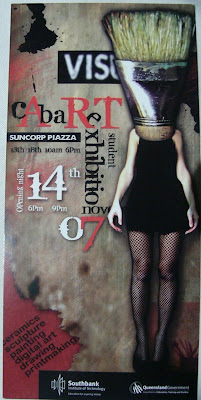Tuesday, 13 November 2007
Wednesday, 30 May 2007
Wednesday Morning Class, 3 related works
My first drawings were drawn with willow charcoal, which i soon found out was very hard to work with if you hadn't ever used it before (accidental smudgings were the worst). I had more success with the conte crayon.
As i built my confidence with the conte one late night using family members as life models, I decided to again try the charcoal and found it much easier to work with this time (no more bad smudges).
For the drawings, I took advantage of my dad's tiredness to have a model which you didn't have to remind not to move, it also meant that they weren't nervous and self conscious about how the drawings would turn out (and this wasnt good news for when I was drawing with the charcoal of a someone that was awake).
It also felt much easier to draw my dad rather than my sister or mother, perhaps because his features have more character.
I've tried to use more lines in these drawings, instead of depending on shading - as I've always done in the past - for tone. I see line as being expressive and spontaneous and I wish to be able to to do quick expressive drawings by using lines without losing what the subject is.
Wednesday, 21 March 2007
Research Project Part 2.
McCarthy began his art career with performances that employed gravity as a literal and metaphorical vehicle. By 1974 his work became far more aggressive and sexually provocative.
His performances have been described as brutally self-assaultive.
Although his interest in film and video goes back to the '60s, many of his early performances that were not recorded. The action was often spontaneous.
After the late '80s he started to make recorded performances. These videotapes were a method of capturing a permanent visual record of a set, a location and a staged performance. ...
McCarthy's work often involves what looks like fecal matter, blood and mucus. He believes we're taught to be disgusted by our bodily fluids. He sees our disgust as related to a fear of death. ...
McCarthy currently works mainly in video and sculpture.
Wikipedia (2007)
"Paul McCarthy's work is known for poking fun at consumerism by making even the most unassuming objects intimidating and bizarre.
His latest show, "Head Shop/Shop Head" at Moderna Museet in Stockholm that opened this month (through 3 September 2006) includes an extensive array of new and older pieces (some dating back to the '60s)."
Kealoha (2006)
Videos of his work available at:
http://www.ubu.com/film/mccarthy.html
Wikipedia, 2007, "Paul MacCarthy" [online]. Available from: http://en.wikipedia.org/wiki/Paul_McCarthy [27 March 2007].
Wednesday, 14 March 2007
Research Project Part 1.
Escher didn't see himself as an "artist" but as a graphic artist with heart and soul (Escher, 1989, p.22)
M.C. Escher became fascinated by the regular Division of the Plane, when he first visited the Alhambra, a fourteen century Moorish castle in Granada, Spain in 1922.
During the years in Switzerland and throughout the Second World War, he vigorously pursued his hobby, by drawing 62 of the total of 137 Regular Division Drawings he would make in his lifetime.
He played with architecture, perspective and impossible spaces... M.C. Escher shows us that reality is wondrous, comprehensible and fascinating.
M.C.Escher Company B.V. (2007)

Cycle 1938 Lithograph
Full size image: http://www.mcescher.com/Gallery/switz-bmp/LW305.jpg
... little men in three colors fill the plane. That same motif is the main theme of the ... print. The little man leaves his house and runs down a staircase. On his way down he loses his three dimensionality and arrives, flat and gret, amid white and black fellow creatures. Each of them is simplified into a rhomb. Three rhombs suggest a cube; the cube borders the house, and from the house the little man again appears... (Escher, 1989, p.44)
To the left you see the enlargement of a leaf of a succulent plant; its actual size was about one inch.... The tiny drop of water acts not only as a mirror but also as a lens, for throught it one sees the magnified structure of the leaf's veins, with bright shimmering air particles trapped between leaf and dewdrop.

Print Gallery 1956 Lithograph
"Escher considered this to be one of his best pictures. ... an overlap is created of the depicted picture gallery and the world of one of the pictures therein exhibited. Only in an imagined world is such a thing possible." (Locher 2000, p.133)
The M.C. Escher Company B.V., 2007, "The Offical M.C. Escher Website" [online], M.C. Escher Foundation & The M.C. Escher Company B.V, Available from: http://www.mcescher.com/Biography/biography.htm
Escher MC, 1989, Escher on Escher exploring the infinite M.C. Escher, Harry N. Abrams Inc., New York














